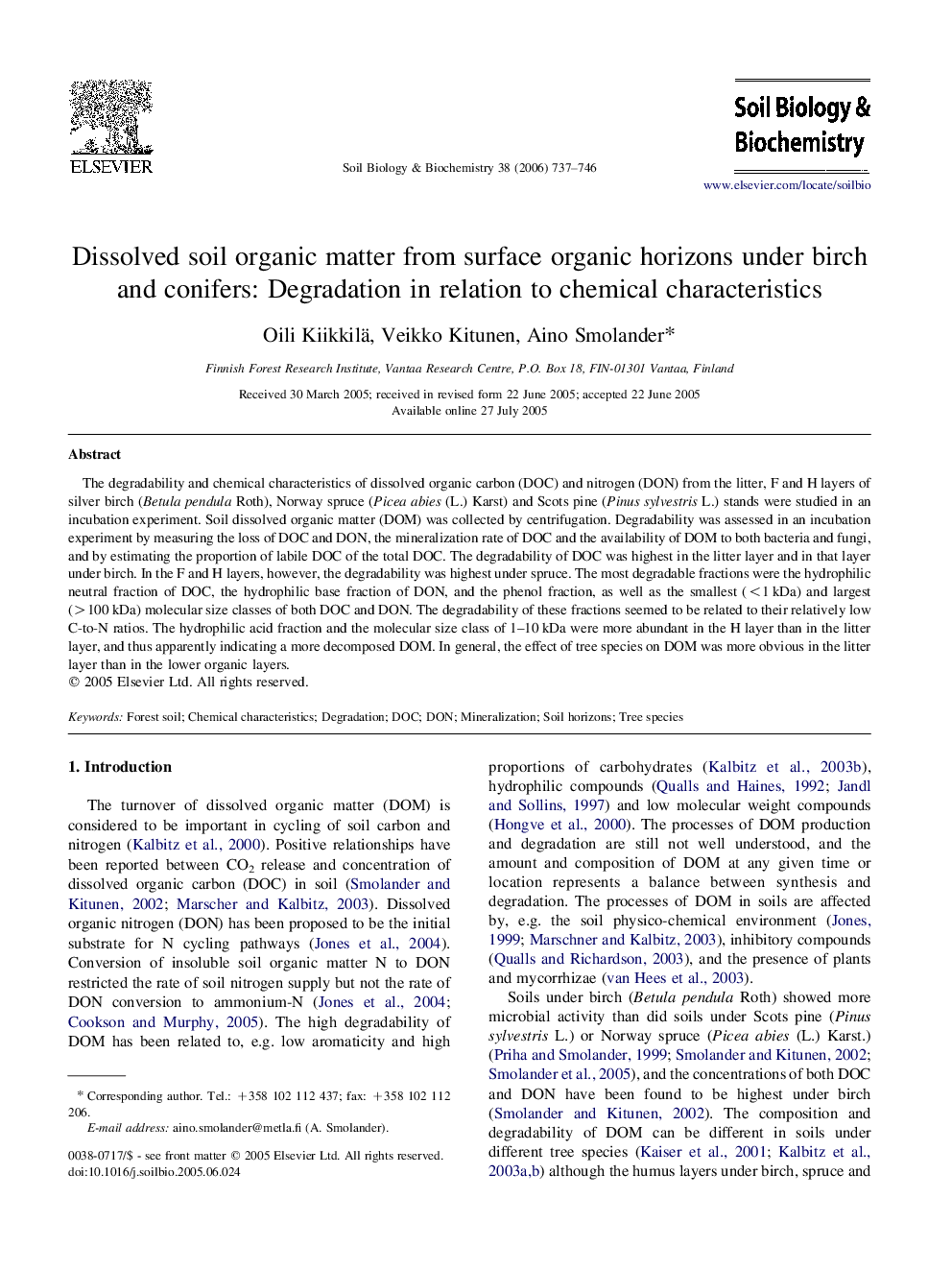| Article ID | Journal | Published Year | Pages | File Type |
|---|---|---|---|---|
| 2026621 | Soil Biology and Biochemistry | 2006 | 10 Pages |
The degradability and chemical characteristics of dissolved organic carbon (DOC) and nitrogen (DON) from the litter, F and H layers of silver birch (Betula pendula Roth), Norway spruce (Picea abies (L.) Karst) and Scots pine (Pinus sylvestris L.) stands were studied in an incubation experiment. Soil dissolved organic matter (DOM) was collected by centrifugation. Degradability was assessed in an incubation experiment by measuring the loss of DOC and DON, the mineralization rate of DOC and the availability of DOM to both bacteria and fungi, and by estimating the proportion of labile DOC of the total DOC. The degradability of DOC was highest in the litter layer and in that layer under birch. In the F and H layers, however, the degradability was highest under spruce. The most degradable fractions were the hydrophilic neutral fraction of DOC, the hydrophilic base fraction of DON, and the phenol fraction, as well as the smallest (<1 kDa) and largest (>100 kDa) molecular size classes of both DOC and DON. The degradability of these fractions seemed to be related to their relatively low C-to-N ratios. The hydrophilic acid fraction and the molecular size class of 1–10 kDa were more abundant in the H layer than in the litter layer, and thus apparently indicating a more decomposed DOM. In general, the effect of tree species on DOM was more obvious in the litter layer than in the lower organic layers.
